
Trump Crashes Stock Markets, Dollar & Oil – Here’s Why China Retaliates With 34% Tariff, And Wiped Off $6.6 Trillion
April 5th, 2025 by financetwitter
Since returning to power in January 2025, Trump had already imposed two rounds of 10% additional duties on all Chinese imports. Having failed to bring the Middle Kingdom to its knees during his first term, the U.S. president is throwing everything, including the kitchen sink, in his “Trade War 2.0” with China. On Wednesday (2-April), Mr Trump slapped an additional 34% tariff.
Effectively, Chinese goods arriving in the U.S. would be subject to tariffs of over 54%. However, barely 48 hours after Trump escalated a global trade war on the so-called “Liberation Day”, it became “Destruction Day” when Beijing on Friday (4-April) made good on its promise to strike back – imposing reciprocal 34% tariffs on all imports from the United States effective from April 10.
“This practice of the U.S. is not in line with international trade rules, seriously undermines China’s legitimate rights and interests, and is a typical unilateral bullying practice. China urges the United States to immediately cancel its unilateral tariff measures and resolve trade differences through consultation in an equal, respectful and mutually beneficial manner,” – China’s State Council Tariff Commission said in its retaliatory tariffs.
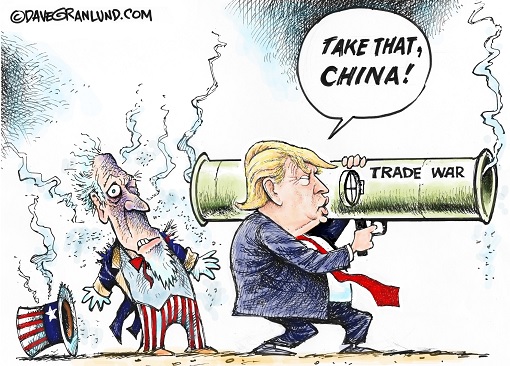
Additionally, China has added 11 U.S. firms to the “unreliable entities list” that it says have violated market rules, including drone manufacturers and put export controls on 16 American companies to prohibit the export of Chinese dual-use items. Beijing also imposed export controls on seven types of rare-earth minerals to the US, including samarium, gadolinium and terbium.
It was already a horrible day on Thursday (3-April), when the Dow fell 1,679 points, or nearly 4%. The S&P 500 plunged nearly 5% and the Nasdaq dropped nearly 6%. But it was just the beginning. All hell broke loose on Friday when the Dow Jones Industrial Average (DJIA) dropped 2,231 points after China retaliated with the unexpected tariff – the biggest tumble since March 2020.
Rubbing salt in the wound, the stock market meltdown on Thursday and Friday marks the first time in history that the Wall Street has lost more than 1,500 points in two consecutive days. The “confidence crisis” sparked by Trump’s trade war also tanked the U.S. dollar, which dropped to a 6-month low against the Euro. Even oil prices drop 7% to US$65 a barrel to 4-year low since 2021.
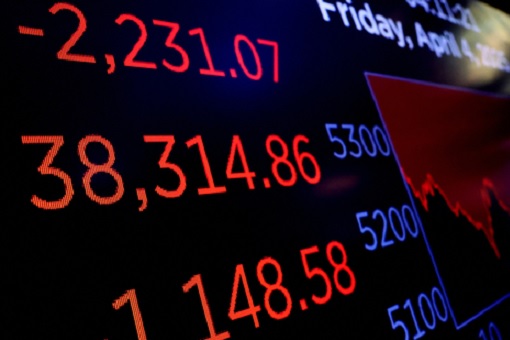
China’s retaliation had wiped off a whopping US$6.6 trillion from the U.S. stock valuation. Worse, roughly US$11.1 trillion has gone up in smoke since January 17, the Friday before Donald Trump took the oath of office and began his second term. The Dow Jones has fallen by 11.9% since the Inauguration Day, while the S&P 500 has lost 15.4%.
Even U.S. Secretary of State Marco Rubio acknowledged on Friday that “markets are crashing” following the Trump administration’s launch of sweeping global tariffs, which the defiant U.S. President claims would allow the U.S. to flourish economically. The new import taxes, which has a minimum rate of 10%, will hit more than 180 countries, including allies.
The key trading partners subject to these customised tariff rates include European Union (20%), Japan (24%), Taiwan (32%), Vietnam (46%), Thailand (36%), Cambodia (49%) and South Africa (30%). The formula is quite simple – identify the trade deficit for the U.S. in goods with a particular country, divide that by the total goods imports from that country and then divide that number by two.
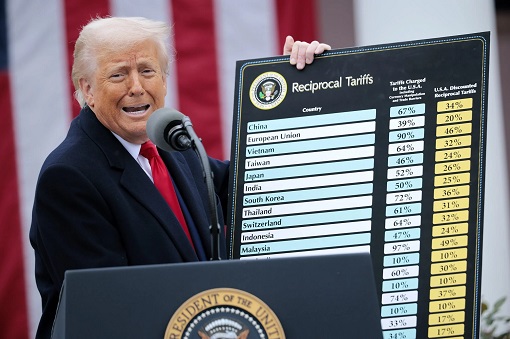
For example, the U.S. buys more goods from China than it sells to them, hence a deficit of US$295 billion. The total amount of goods it buys from China is US$440 billion. Here’s the calculations – divide 295 by 440 gives you 67%, then divide that by two and round up. Therefore, the tariff rate imposed on China is 34%. Likewise, when it applied to the EU, the Trump’s formula resulted in a 20% tariff.
While countries like Malaysia – hit with 24% tariff – has decided not to retaliate because it has zero chance of winning a trade war with the U.S., world’s second largest economy – China – has the firepower to play the tariff game. But why is Beijing so daring to the extent of not only matching Trump’s tariff rate (34%), but also boldly retaliates with a sweeping tariff instead of a targeted one like previously?
First of all, Trump has effectively raised the average US tariff rate on Chinese products to 69%, not just 54%. That’s because the average rate on Chinese goods was already at 15% when Trump took office in January this year. Essentially, China’s goal to grow its economy by around 5% in 2025 could be jeopardized as Trump’s escalation could erase 2.5% off the Middle Kingdom’s economic growth this year.

Just like poker, Trump’s trick is to force other players to fold or surrender by accepting the sweeping tariff with a baseline of 10%. Small nations like those in the Southeast Asia have no choice but to fold. But players like China, European Union, and Canada have enough economic power to match Trump’s raise (call). The burning question is whether Trump has the balls to re-raise or increase the bet amount again.
Donald Trump has personally warned America’s foreign trading partners “not to retaliate” to his tariff policy, which means Washington knew the economic consequences of the game. Europe and Canada, however, might be bluffing when they talk tough on Trump’s tariffs. Commission President Ursula von der Leyen claims they hold “a lot of cards”, including the strength to negotiate and the power to push back.
In reality, even though the EU’s market of 450 million people makes up 22% of global GDP, it wants to avoid a new backlash by the Trump administration as the egoistic U.S. president could easily trigger an open trade war between the U.S and EU. The U.S. goods trade deficit with the European Union (EU) was US$235.6 billion in 2024, a 12.9% increase (US$26.9 billion) over 2023.
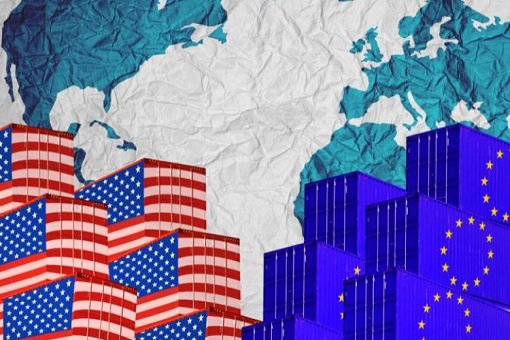
Clearly, not only the EU has lesser appetite than Trump to raise its bet in the poker game, the Europe actually has to take politics into account, not just economics. For example, the EU has already trapped itself after foolishly obeyed Washington in sanctioning Russian gas following the invasion of Ukraine, forcing the 27-bloc EU nations to depend heavily on the U.S. liquefied natural gas (LNG).
So, the Europe’s tactic is simple – threaten heavy retaliation, hope Donald Trump will chicken out and is persuaded to negotiate, and then pray the POTUS makes a U-turn on tariffs. Unlike China, the EU is in no rush to retaliate because it is bluffing from the beginning. To project strength for political reasons, it has to put up a brave face and pretends to be ready to retaliate.
Bluffing or not, the damage is already done even before Trump’s 20% tariffs on EU goods sold to the U.S., especially in Germany, after an earlier 25% auto tariff on any vehicle not assembled in America, affecting more than US$460 billion worth of imports of vehicles and auto parts imports annually. Beijing was – deliberately – adding fuel to the fire when it announced a retaliatory 34% tariff on the U.S.

Beijing is actually capitalising on the plunging stock markets, U.S. dollar and oil price to make matters worse. Just like a “scorched-earth policy” in a military strategy, China purposely destroys the global financial markets to prevent enemy U.S. from winning the tariff war. If Trump’s intention was to destroy the Chinese economy, China is making sure it brings the U.S. (and all its allies) down as well.
If China’s economic growth would be reduced to 2.5% instead of 5%, it wants to ensure the U.S. is plunged into a recession, or worse depression. The worse the crisis becomes the better chance Trump will be under domestic pressure to make a humiliating U-turn. This is similar to the “escalate to de-escalate” favourite tactic used by the West in military conflicts.
Mr Trump thought he could easily force China to negotiate with his 34% tariff, only for the Chinese government to turn the table with its own 34% tax to force the U.S. to cancel the tariff. And Beijing could raise the bets on the poker table because it does not rely on the U.S. for oil and gas, minerals, defence, electric vehicle market or latest semiconductors.
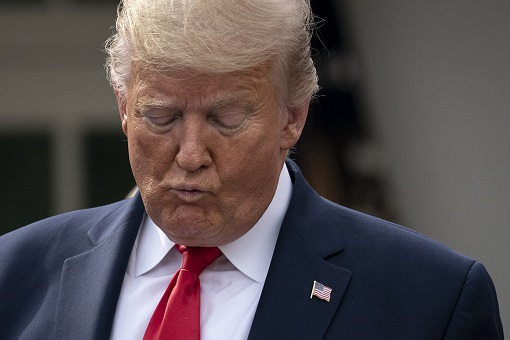
The best part is, not only Donald Trump gets all the blames for sinking the Wall Street, but also criticized by the entire world for sparking a full-blown global trade war that could push up inflation and trigger a recession. By retaliating in full force, China is actually leading other countries to retaliate in a similar fashion. It could afford to do so because Trump has forgotten one thing.
Having learned how to play the trade war game during Trump’s first term, China today is well prepared. The Chinese’ 34% duties on all US goods, which are on top of the 10%-15% tariffs placed on about US$21 billion worth of agricultural trade in early March, will basically shut down all US agricultural imports. The biggest impact will be American soybeans and sorghum.
American farmers will be in deeper trouble if the EU also boycotts the U.S. soybeans. China has already found alternatives in Brazil, Argentina and Paraguay as suppliers of soybeans, wheat, corn and other agricultural goods. China is such a huge market that it still remains the largest market for U.S. agricultural products despite imports have plunged to US$29.25 billion (2024) from US$42.8 billion (2022).
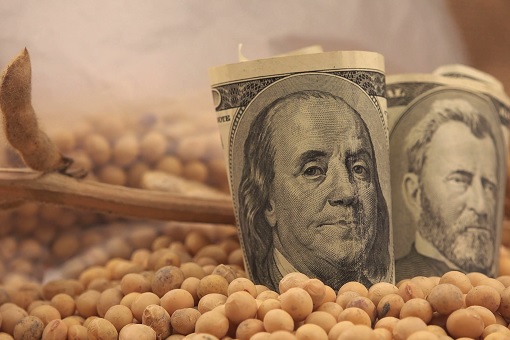
Besides agricultural goods, the U.S. top exports to China include crude and petroleum oil, propane, and liquefied natural gas, which were worth US$23.6 billion in 2023. China also bought US$17 billion in machinery and parts from the US in the same year, as well as US$12 billion in electronics. American cars export to China, worth US$7.5 billion, will now be impacted by 34% tariffs.
Of all the countries hit with tariffs, American families will likely feel the impact of China’s most – and soon. And Beijing knew this. That’s because despite the 54% total tariff on imported Chinese products, U.S. consumers will continue torely highlyon them, through many parts of the supply chain. For example, electronics and machinery are the top goods imported to the U.S. from China, at US$208 billion in 2023 alone.
Prices for iPhones could increase by up to 40% due to the new 46% tariffs on Vietnam and 34% tariffs on China. From computers to domestic appliances, and electric batteries, everything will cost more for Americans. Textile imports worth US$36 billion may also impact regular consumers as cheap, American-favourite brands such as Shein and Temu may face tariffs for the first time.

The U.S. president repeatedly said his tariffs will bring jobs and factories back to the U.S., but Beijing has another idea – escalate the trade war, push up prices, reduce consumer spending in America, spark inflation and cause the U.S. economic growth to decline. China has taken steps to restrict local companies from investing in the U.S. – a move to create more leverage during negotiations.
The fact that Chinese President Xi Jinping and six other members of the Politburo Standing Committee were out planting trees to promote the need to counter deforestation, whilst other world governments were panicked and scrambled to understand the impact of the tariffs on the day Trump announced it, speaks volumes about China’s readiness and preparedness.
Chances are President Donald Trump did not fully understand himself the consequences of his executive order because even an unknown territory – Heard and McDonald Islands – was slapped with 10% tariff. Exactly how did the two tiny, remote Antarctic outposts populated by innocent 100,000 penguins and seals are targeted by the U.S. president to “Make America Great Again” is beyond comprehension.

Trump do not like trade block. He deal one to one. He will know how to break up any block approach...that much I am aware of it.
ReplyDeleteHow to have a united ASEAN response when Vietnam already drop tariff...
~~~~~
https://youtu.be/MiMhYgzNzEA?si=fKmPxcycT-FUC1SF
PM Anwar Ibrahim's Statement on US Reciprocal Tariffs
...
https://x.com/BRICSinfo/status/1908880698091389008?t=6UJHxhpscK5zJY1OnIdYjg&s=19
JUST IN: 🇻🇳🇺🇸 Vietnam offers to eliminate all tariffs on US goods to avoid President Trump's tariffs.
Fyi
Delete~~~~~
https://t.me/GoBPH/5648
^The Russian Special Economic Envoy to the U.S.
Wanna bet the Russians are telling their partners in the Global South to capitulate to Trump?
https://x.com/kadmitriev/status/1908875154676986320?t=xQCbmGCeC3Sy9m153G_-1w&s=19
Wise and effective approach 🇮🇳
https://x.com/BRICSinfo/status/1908864365480071175?t=tcEKiuCL-bNMlOSpBJXs0A&s=19
JUST IN: 🇮🇳🇺🇸 India seeks to negotiate new trade deal with the United States to avoid President Trump's tariffs.
...
https://t.me/GoBPH/5649
https://x.com/AfricanHub_/status/1908898401191710976?t=aBnMMIYfDqOUAwB83hXCEQ&s=19
Emmerson Mnangagwa, President of Zimbabwe 🇿🇼, has announced a suspension of all tariffs on goods imported from the United States of America, aiming to foster a positive and mutually beneficial relationship with the USA
Your comments on this
Columbia Redux?
Delete~~~~~
https://t.me/SGTnewsNetwork/89301
🔥President Trump just landed on Marine One DIRECTLY on the golf course at Trump Doral, where the LIV Golf Tournament will be held this weekend
Trump is utilizing this as a working trip, meeting with dignitaries from around the globe
Trump NEVER stops working
🇺🇸Join👉 @SGTnewsNetwork
📎 Twitter ▪️ Truth Social
...
https://t.me/WeTheMedia/121870
U.S. National Economic Council Director Kevin Hassett says more than 50 countries have reached out to the White House asking for trade negotiations following President Trump's tariff announcement.
https://m.economictimes.com/news/international/global-trends/more-than-50-countries-have-contacted-white-house-to-start-trade-talks-trump-adviser-says/articleshow/120039578.cms
Toldja, Kampuchea next.
Delete
DeleteThere is a train of thought circulating that says the likes of Kampucheans will benefit instead of a parasitic system that exploits both side, the likes of Kampucheans as low cost slave-producers and Americans as low cost comsumpters...let's see if it is true and altruistic...
~~~~~
https://t.me/WeTheMedia/121874
A47 Brief: Trump’s Tariffs: Crashing the Top 10%’s Party to Renegotiate for the Middle Class
The market "crash" following Trump’s imposition of tariffs has understandably worried and upset many, but let’s put some things into context.
Trump’s stated purpose is to drive economic activity back to the U.S. and protect domestic markets while reducing the tax burden on citizens by establishing an external revenue system. Another key aspect of this feature of Agenda 47 is to force a renegotiation, compelling those who have long resisted acknowledging that the existing system has failed both humanity and the American people. Yet, this second aspect has been largely overlooked, as many focus only on the short-term downturns in the stock market.
https://justindeschamps.substack.com/p/a47-brief-trumps-tariffs-crashing
Here is another angle of Trump's tariff play.
DeleteTrump has been in loggerheads with the Federal Reserve System to cut interest rate to spur the lackadaisical US economy. But the Judas of WallStreet that control the monetary policies of the US wouldn't agreed. & Trump has NO control I've these monetary czars.
Decreasing interest rates can stimulate economic activity by making borrowing cheaper, potentially leading to increased consumer spending, business investment, and job creation, while also potentially lowering the value of a country's currency.
So an smartalecky scheme is been concocted by the Trump's financial wizards.
Increase the import tariffs of the countries with huge trade deficits with US.
ie if China import costing $1 now would be $1.34. Indirectly the $ has devalued by 34%. The smart part is the tariff scheme isn't cutting across the board with the same rate as in direct devaluation of the $. Those countries with huge trade deficit r exporting popular items that most Americans wanted to buy. These will cause the US inflation to spire, forcing the FedReserve to lower the interest rate.
Job done!
Those r insignificant 'surrenders' that Trump doesn't look for.
ReplyDeleteWith China retaliated immediately with force, soon those other influential countries with huge positive trade balance will follow.
Watch, EU, Canada…